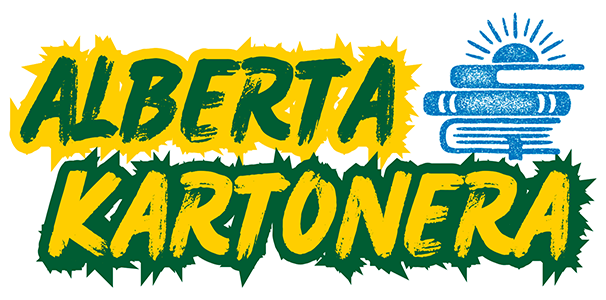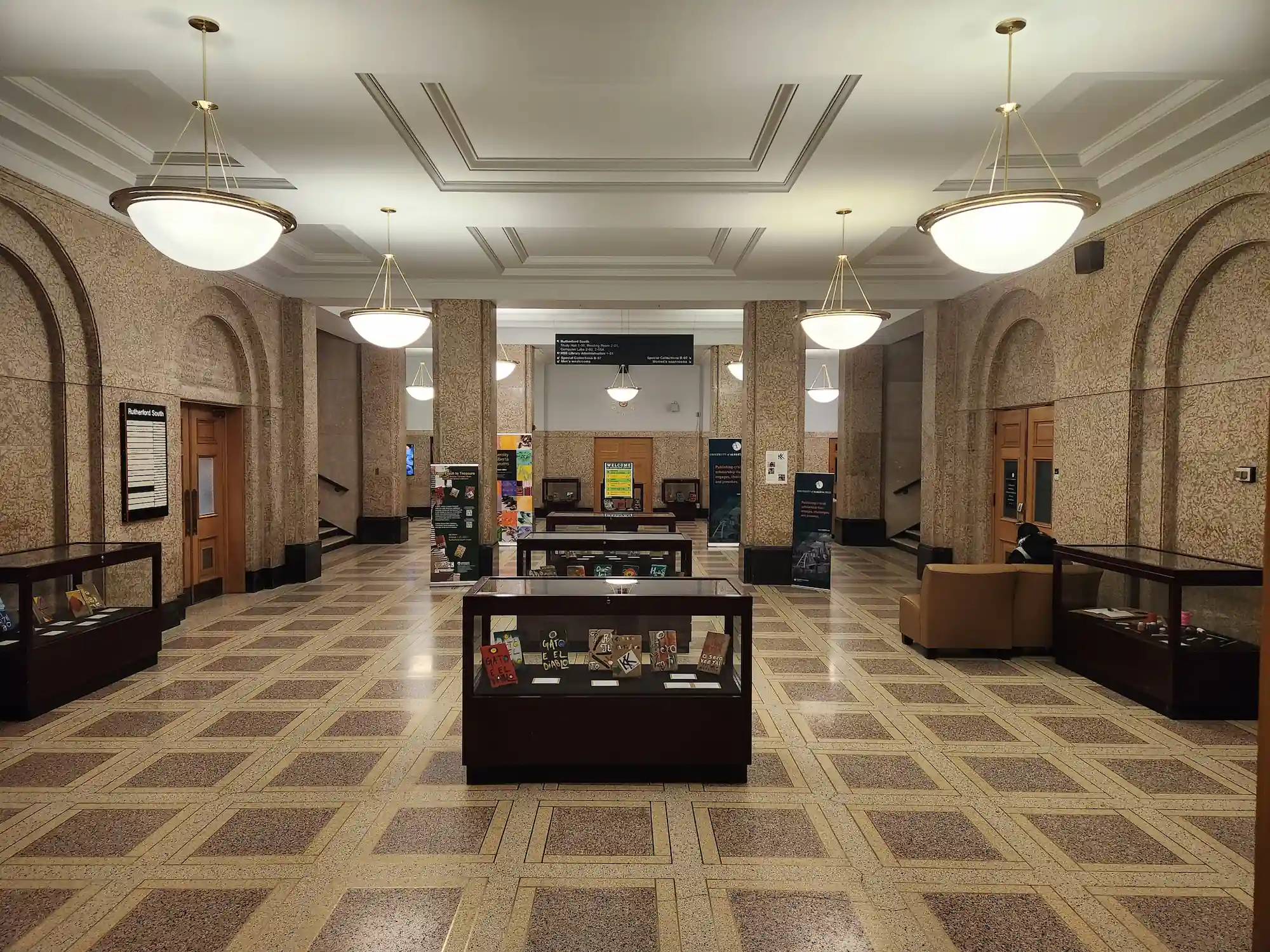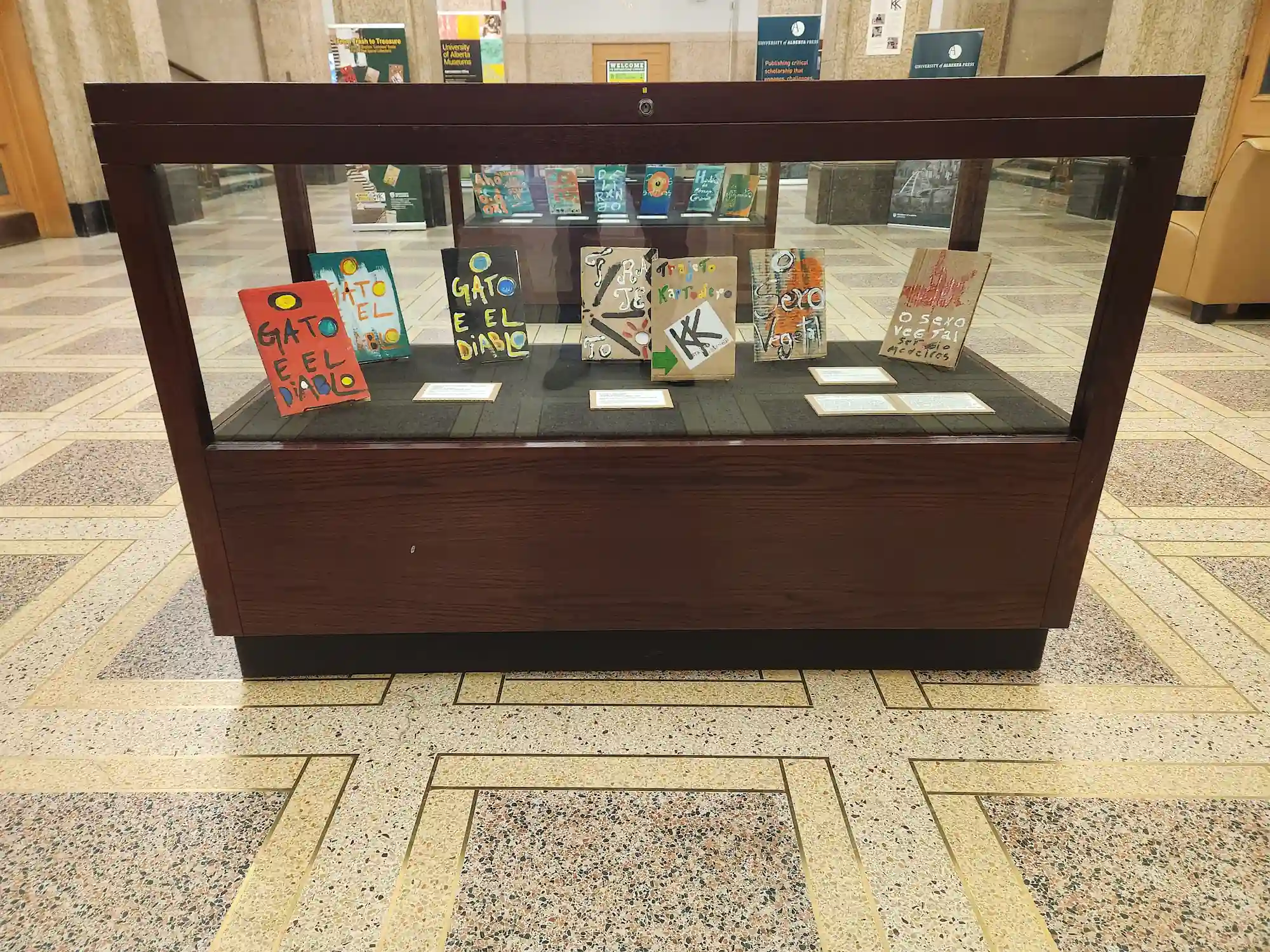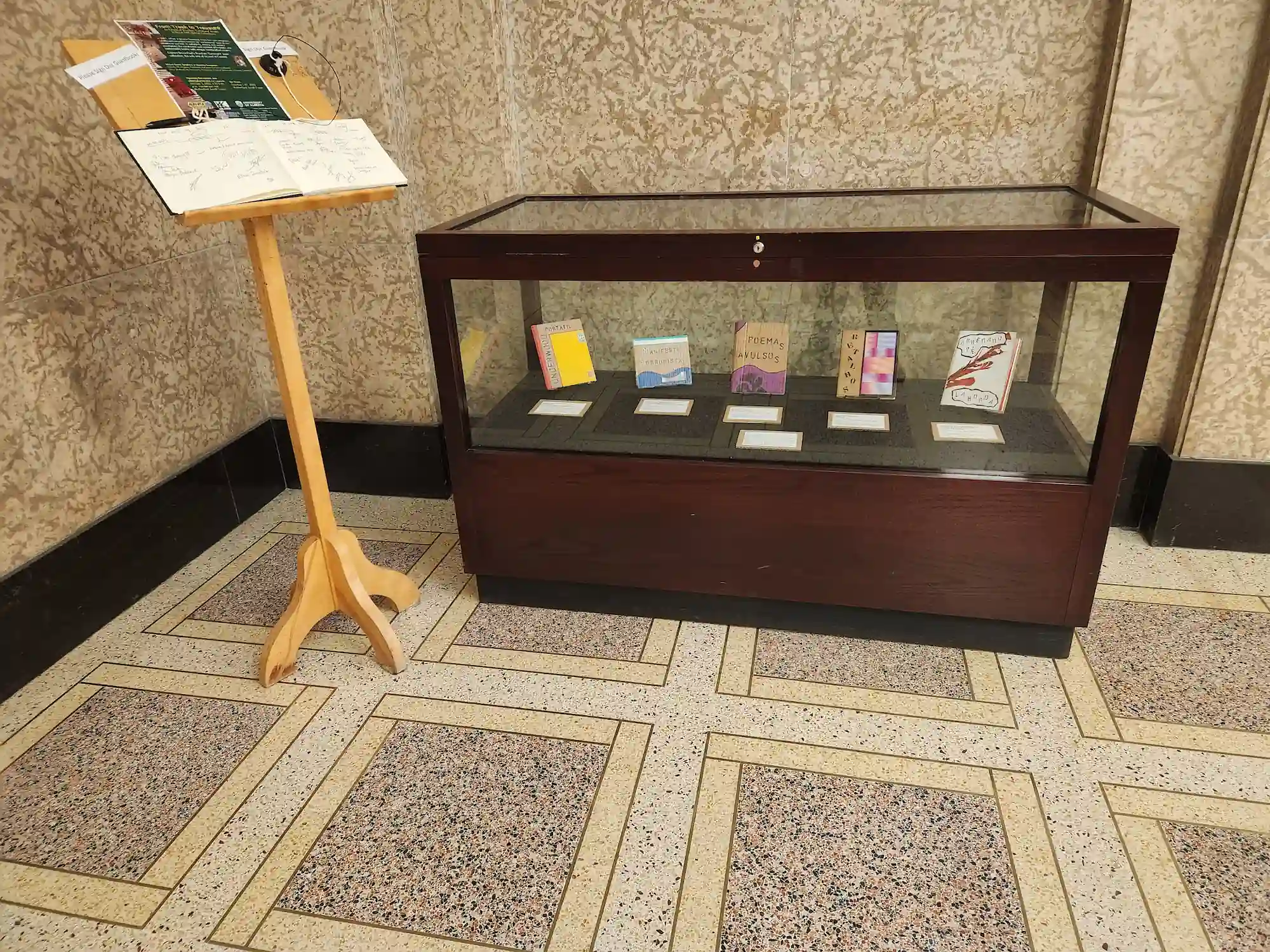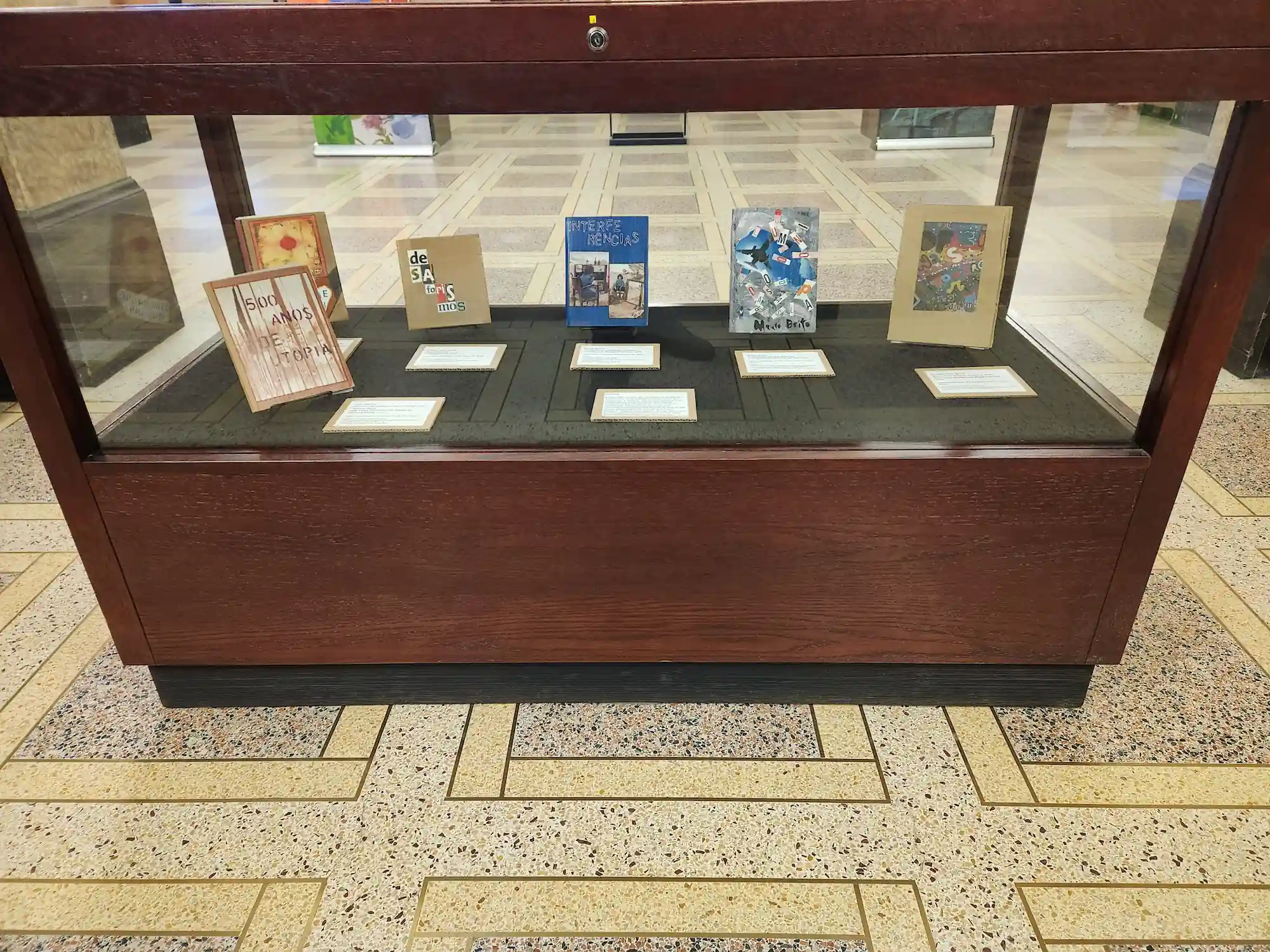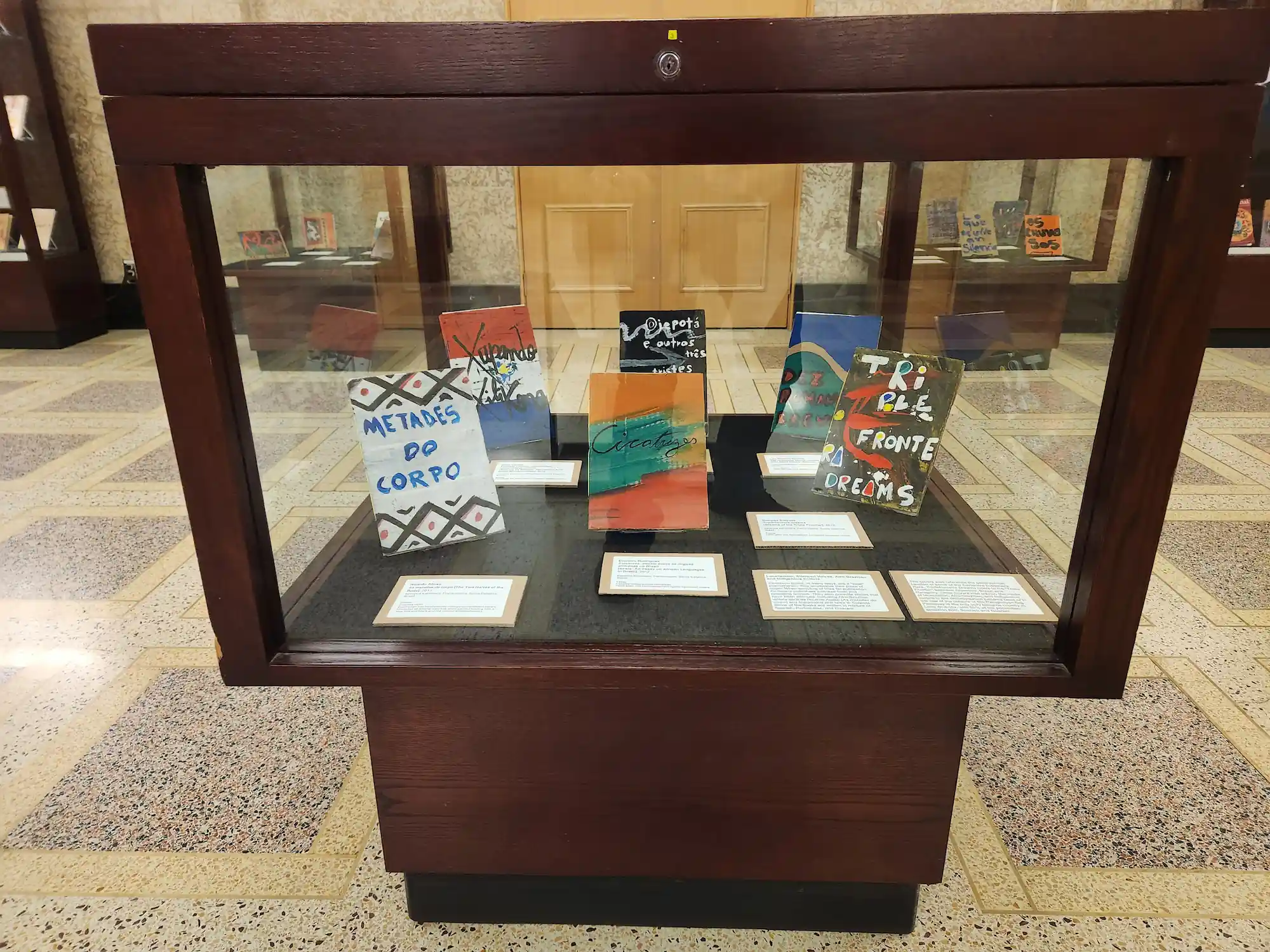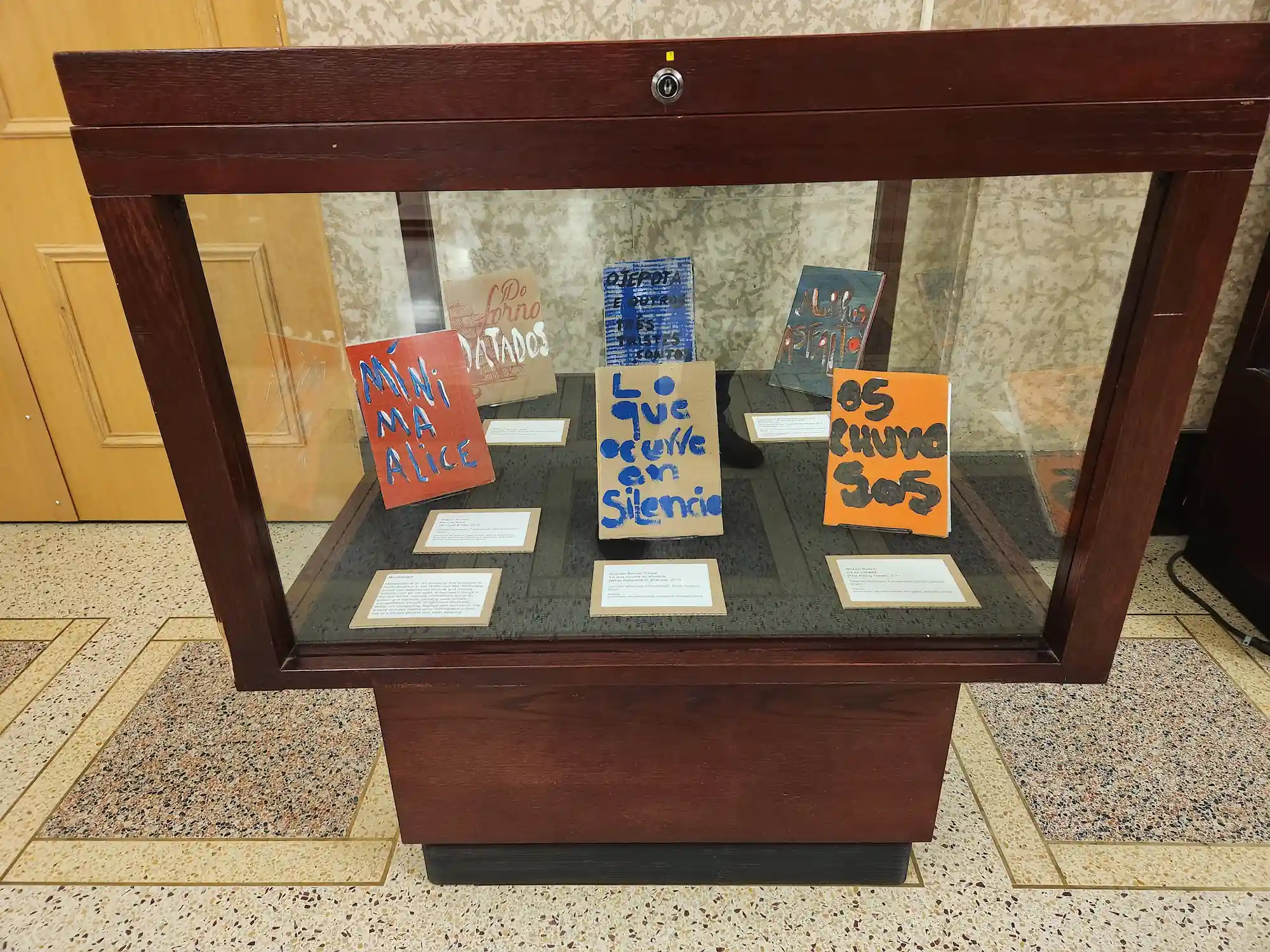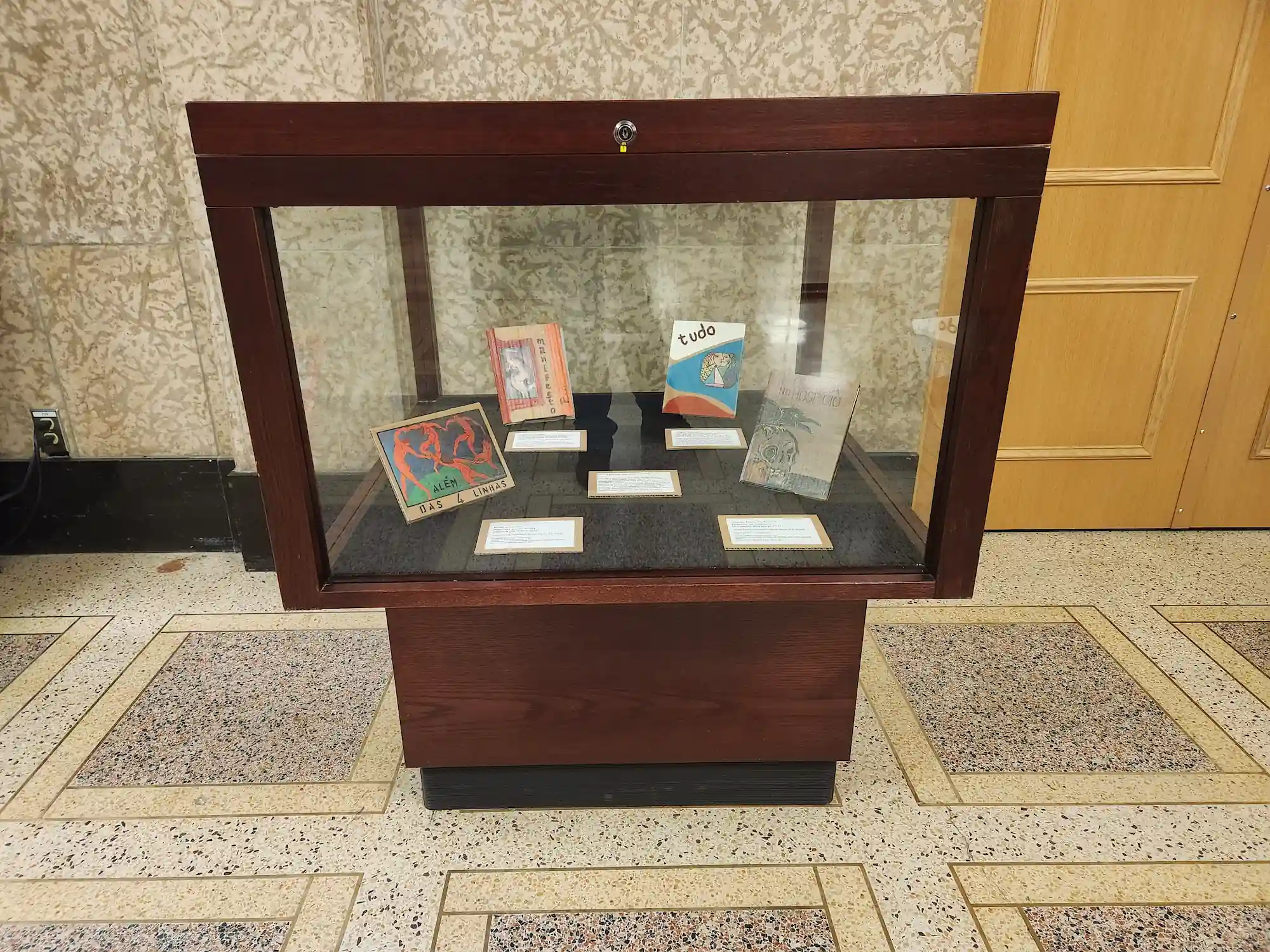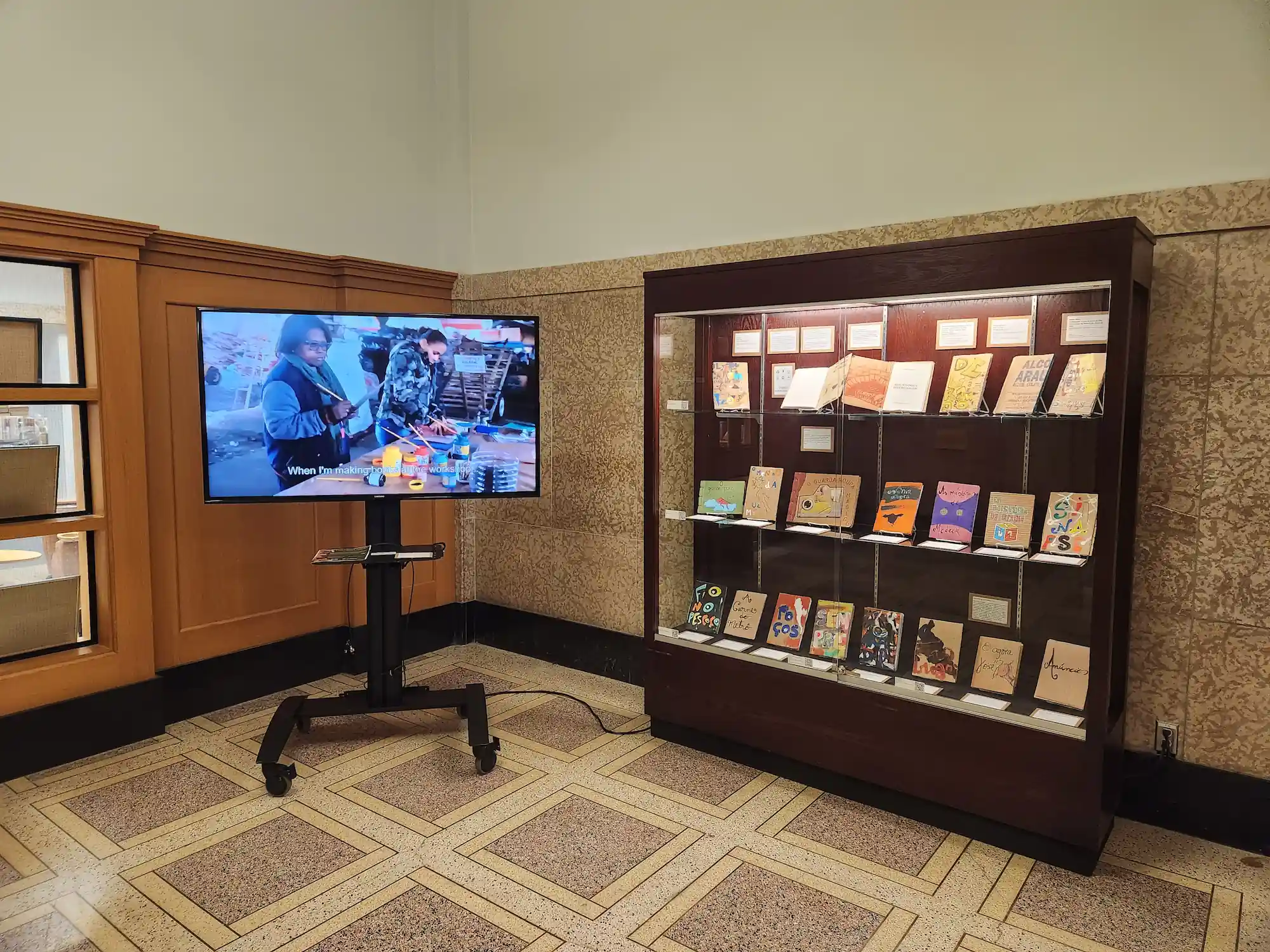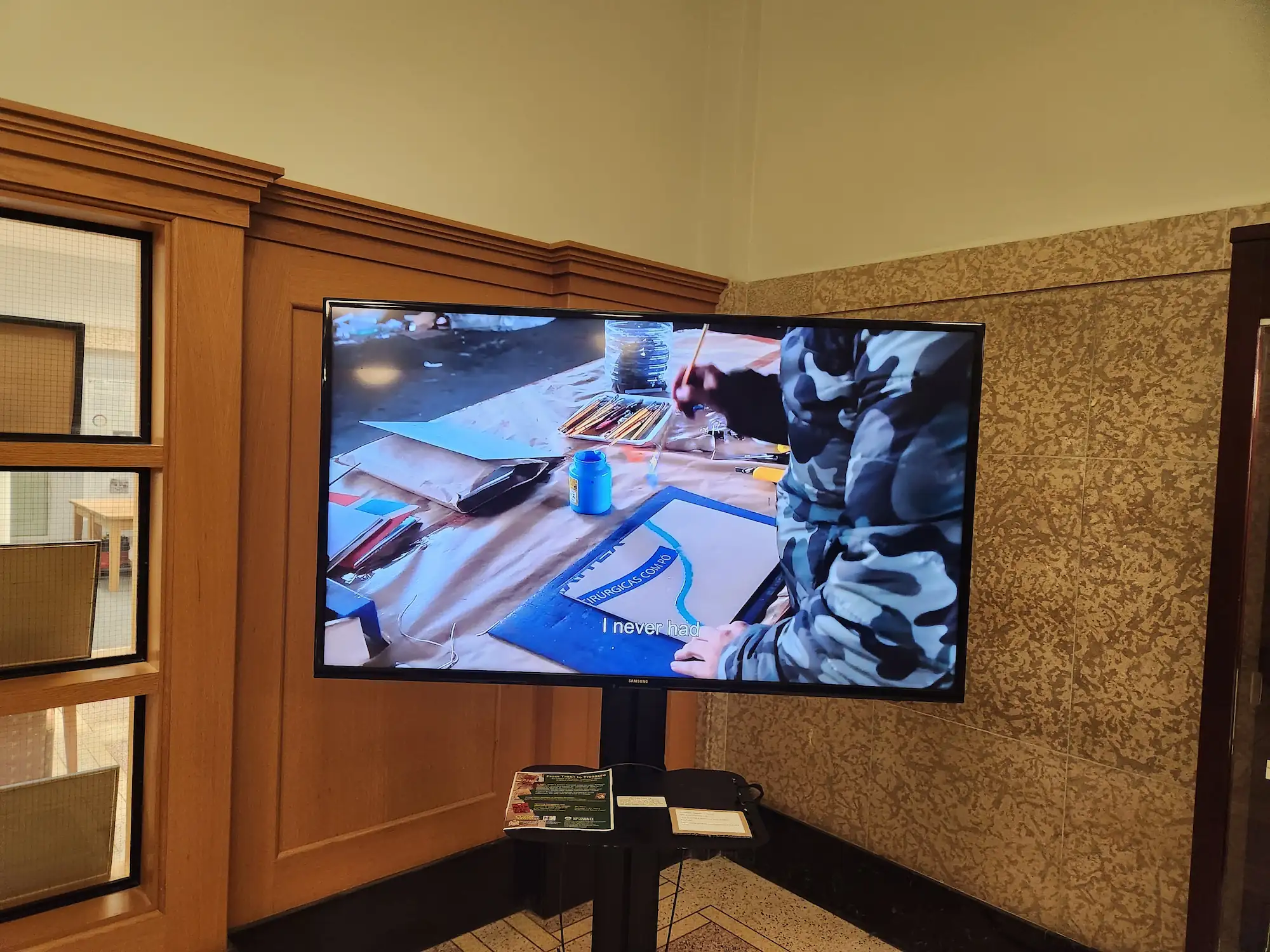Book Categories
Alberta Kartonera
The Alberta Kartonera Website was launched alongside the From Trash to Treasure Exhibit, organized by the Department of Modern Languages and Cultural Studies (MLCS) and held in October 2023 at the Rutherford Library, University of Alberta (UofA). The website helped publicize the exhibit, which showcased the collection of Brazilian Cartonera books that are part of the Bruce Peel Special Collections (BPSC), which houses over 100,000 rare books and significant archival materials exploring a range of local and international topics (BPSC Website, n.d.).
In addition to promoting the exhibit, Alberta Kartonera aims to become a Cartonera publisher, inspired by Latin American publishers such as Katarina Kartonera (Brazil), Eloísa Cartonera (Argentina), and others.
The initiative involves students from MLCS courses at UofA in producing Cartonera books and offering workshops in schools and libraries. To date, no books have been published by Alberta Kartonera yet.
Collage
From “coller”, French for “to paste,” a collage is a composition using pieces of paper, cloth, etc., glued onto a surface. The glued materials refer to something in the world but also act as elements of the composition. When they are juxtaposed, the elements generate new meanings.
Modern collage traces its roots to the Cubist artists Georges Braque and Pablo Picasso.
These books feature collage techniques in their use of images and letters cut out from print material and pasted onto the covers.
Colour Schemes
Cartonera books are often characterized by bright covers. A number of the Cartonera books in the BPSC have covers with similar visual patterns, at times using complementary colours.
This may suggest that they were created around the same time, although that is not necessarily the case.
These books use related colour schemes, but the books have different publication dates.
Handwriting and Calligraphy
We refer to books as “print media” because they were traditionally produced by the mechanical process of the printing press. While the pages of Cartonera books are printed, the covers are handcrafted. The lettering sometimes is written by hand in styles meant to attract readers.
This harkens back to “calligraphy” (Greek for “beautiful writing”), handwriting as a decorative or artistic practice.
Interestingly, the lettering on some covers is almost illegible, prioritizing visual expression over intelligibility.
Illustration
Interestingly, many book covers in the Cartonera collection lack the author’s name on the cover, and do not include any blurbs.
The covers, however, do reflect the content through the use of symbolic illustrations, though often in subtle ways.
Katarina Kartonera
The books from Katarina Kartonera are essentially handmade, featuring unique, exclusive covers that are never repeated.
They were born out of a social awareness of inclusion, recycling materials like cardboard and involving the participation of waste pickers, writers, educators, students, researchers, and artists in both production and distribution.
They promote contemporary, NON-COMMERCIAL literature through social initiatives, strengthening culture and education without any external funding or sponsorship. (Katarina Kartonera, n.d.)
Localization and Cultural Voices
Localization, Silenced Voices,
Afro-Brazilian and Indigenous Culture
Cartonera books are a distinctly local phenomenon that emphasize their origins, with publishers prioritizing local and emerging authors while promoting silenced voices, including Afro-Brazilian writers like Ricardo Aleixo (As metades do corpo [The Two Halves of the Body]) and Indigenous oral tales in Ojepotá, sometimes blending Spanish, Portuguese, and Guarani.
The covers also reflect geographical and cultural localization, as seen in Triplefronteira Dreams [Dreams of the Triple Frontier], which references the “Triple Frontier” between Argentina, Brazil, and Paraguay, and other covers that incorporate Afro-Brazilian and Indigenous elements or the colors of the Paraguayan flag, highlighting Paraguay’s unique status as Latin America’s only truly bilingual country, where 90% of the population speaks both Spanish and Guarani.
Minimalism
Minimalism is an art tendency that emerged in North America in the 1950s and 60s. Characterized by the creation of artworks based on pure geometrical shapes and colours, it countered the mimetic impulse to represent things in the real world.
Instead, minimalist artists were interested in painting as colour and material, rendering their compositions pure, simple, and independent from any figurative representation.
The covers of these books echo that trend in using a limited palette and simple lettering, avoiding excessive ornamentation.
Stenciling
Stenciling is a technique in the visual arts used for reproducing letters, images, or designs by applying ink or paint to a stencil, a piece of cardboard or metal with holes cut out into various shapes. The ink that goes through onto the paper or surface creates the desired letters or shapes. Stencils can reproduce a pattern quickly and easily, so they are often used for street signs and graffiti.
The lettering on covers of these books either literally uses stencil or suggests that technique. Because the lettering is uniform, it is opposed to the covers that display titles written instead in more expressive longhand, and also suggests the urban environment.
Texture
Besides collage, which combines a variety of materials, other techniques bring out the texture aspect of Cartonera books. Because they are made from recycled corrugated cardboard, on many of the covers of these books it is possible to see the folds or ridges of the corrugated sheet between the two flat liner boards.
Certain covers have been treated with a special gloss that makes the ridges more apparent. In other cases, the liner board on one side has been partially torn to reveal the corrugated sheet. Other covers include textiles glued on, creating not only visual but also tactile patterns.
The Aura of the Book & Unique Covers
In his essay “The Work of Art in the Age of Mechanical Reproduction” (1935), the German critic Walter Benjamin coined the concept of the “aura” of a work of art.
Benjamin saw the work of art as a unique object existing in time and space. At the time, however, photography was gaining ground, and blurring the distinction between copy and original, threatening the privileged status of art. Why go see the Mona Lisa in the Louvre, if you could carry a postcard of it in your pocket?
Benjamin recognized the democratizing potential of photography since it made art accessible to people who could not afford to travel to see the original in a museum. At the same time, the process of mechanical reproduction entailed the loss of the “aura,” the special quality that only the art object was said to possess.
Because Cartonera books have unique covers for the same work, in a way, they attempt to restore the “aura” to books, objects that are, invariably, mechanically reproduced.
We can see a variety of covers corresponding to the same title.
Traces of Recycling
The covers of these books are made from corrugated cardboard acquired from cartoneros (Spanish) or catadores (Portuguese), grassroots urban recyclers in Latin America. The reuse of this material makes these books a testament to sustainable practices that have emerged in that region, often due to economic need.
On many of these covers, we can still read what was printed on the cardboard, which gives us a clue as to what the boxes were used for.
This adds a layer of history to the books and also generates new meanings: for instance, symbols indicating that boxes should be protected from the rain or that the contents are fragile are integrated into the cover to suggest to readers that the books should also be “handled with care.”
Vento Norte Cartonero
The Vento Norte Cartonero project was created in 2013 by Maria Papelão Editora, in Santa Maria-RS, Brazil, as an alternative and independent space for publishing books with handcrafted covers, featuring both published and unpublished authors.
It follows the same line as other cartoneras in Latin America, with Eloísa Cartonera—the first of its kind, established in 2003 in Buenos Aires—serving as the inspiration.
Over the years, several books by a variety of authors and genres have been published, while numerous workshops have been held in public schools with the aim of demonstrating the book creation process and demystifying it as a sacred and distant object. (Matinal Jornalismo, n.d.)
Visual Citation & Intertextuality
Just as a literary author may quote another author in a text, a technique known as “intertextuality,” artists and designers may reference or directly include an image by another artist in their creations.
Some of these book covers reproduce images of paintings by Pablo Picasso, Henri Matisse, and Michelangelo.
The images are used as both elements of the composition and as creative illustrations of the book content.
From Trash to Treasure in the News
[UFSC brings "From Trash to Treasure" exhibit to a university in Canada]
Notícias da UFSC | News Article
The professor from the Department of Arts at the Federal University of Santa Catarina (UFSC), Dirce Waltrick do Amarante, and the student and editor of Katarina Kartonera, Evandro Rodrigues, are participating this week in the launch of the “From Trash to Treasure” exhibit at the University of Alberta, Canada.
The exhibit will open on Thursday, October 5, when Dirce and Evandro will virtualy participate of the event to talk about the project. (Notícias da UFSC, 2023)
From Trash to Treasure: An Exhibit of Brazilian Cartonera Books
Edmonton Journal | The List | Entertainment Guide
“In 2001, when a severe financial crisis hit Latin America, cardboard recyclers known as ‘cartoneros’ took to the streets to survive. In solidarity, artists and writers purchased the cardboard and created affordable and sustainable books with unique handcrafted covers.”
“With a spotlight on the distinctive Brazilian titles housed within, our aim is to educate visitors about the rich tapestry of the ‘Cartonera’ movement and the resilience of the ‘cartoneros’.” (Alberta Kartonera, 2023)
Books Made from Recycled Material
CBC Listen | Radio Active | Radio Interview
Odile Cisneros – PhD, Professor at University of Alberta in the Department of Modern Languages and Cultural Studies, and responsible for the organization of the exhibit From Trash to Treasure is interviewed by Jessica Ng and Min Dhariwal.
“We’ll hear about a new exhibit at the University of Alberta celebrating a new type of book made by hand from recycled cardboard” (CBC Listen, 2023).
[UFSC takes "From Trash to Treasure" exhibit to a Canadian university]
Rádio Ponto | O Som da Notícia | Radio Interview
Dr. Odile Cisneros is interviewed in the radio show O Som da Notícia.
The Sound of News (in English) is produced by Class B of the Audio and Radio Journalism course in the 1st semester of the Journalism program at the Federal University of Santa Catarina and is brodcated from radio station Rádio Ponto (Rádio Ponto, 2023).
"From Trash to Treasure" exhibits a remarkable phenomenon sparked by recycling cardboard
The Gateway | News Article
“A current exhibit from the University of Alberta’s Bruce Peels Special Collections showcases how empathy and creativity combined allowed for an even more affordable solution in Latin America.”
“From Trash to Treasure” exhibits over 50 Brazilian ‘cartonera’ books, with covers made from recycled cardboard.” (The Gateway, 2023)
[UFSC brings "From Trash
to Treasure" exhibit to a
university in Canada]
Notícias da UFSC | News Article
The professor from the Department of Arts at the Federal University of Santa Catarina (UFSC), Dirce Waltrick do Amarante, and the student and editor of Katarina Kartonera, Evandro Rodrigues, are participating this week in the launch of the “From Trash to Treasure” exhibit at the University of Alberta, Canada.
The exhibit will open on Thursday, October 5, when Dirce and Evandro will virtualy participate of the event to talk about the project. (Notícias da UFSC, 2023)
From Trash to Treasure: An Exhibit of Brazilian Cartonera Books
Edmonton Journal | The List | Entertainment Guide
“In 2001, when a severe financial crisis hit Latin America, cardboard recyclers known as ‘cartoneros’ took to the streets to survive. In solidarity, artists and writers purchased the cardboard and created affordable and sustainable books with unique handcrafted covers.”
“With a spotlight on the distinctive Brazilian titles housed within, our aim is to educate visitors about the rich tapestry of the ‘Cartonera’ movement and the resilience of the ‘cartoneros’.” (Alberta Kartonera, 2023)
Books Made from
Recycled Material
CBC Listen | Radio Active | Radio Interview
Odile Cisneros – PhD, Professor at University of Alberta in the Department of Modern Languages and Cultural Studies, and responsible for the organization of the exhibit From Trash to Treasure is interviewed by Jessica Ng and Min Dhariwal.
“We’ll hear about a new exhibit at the University of Alberta celebrating a new type of book made by hand from recycled cardboard” (CBC Listen, 2023).
[UFSC takes "From Trash
to Treasure" exhibit to a
Canadian university]
Rádio Ponto | O Som da Notícia |
Radio Interview
Dr. Odile Cisneros is interviewed in the radio show O Som da Notícia.
The Sound of News (in English) is produced by Class B of the Audio and Radio Journalism course in the 1st semester of the Journalism program at the Federal University of Santa Catarina and is brodcated from radio station Rádio Ponto (Rádio Ponto, 2023).
"From Trash to Treasure" exhibits a remarkable phenomenon sparked by recycling cardboard
The Gateway | News Article
“A current exhibit from the University of Alberta’s Bruce Peels Special Collections showcases how empathy and creativity combined allowed for an even more affordable solution in Latin America.”
“From Trash to Treasure” exhibits over 50 Brazilian ‘cartonera’ books, with covers made from recycled cardboard.” (The Gateway, 2023)
[UFSC brings "From Trash
to Treasure" exhibit to a
university in Canada]
Notícias da UFSC | News Article
The professor from the Department of Arts at the Federal University of Santa Catarina (UFSC), Dirce Waltrick do Amarante, and the student and editor of Katarina Kartonera, Evandro Rodrigues, are participating this week in the launch of the “From Trash to Treasure” exhibit at the University of Alberta, Canada.
The exhibit will open on Thursday, October 5, when Dirce and Evandro will virtualy participate of the event to talk about the project. (Notícias da UFSC, 2023)
From Trash to Treasure: An Exhibit
of Brazilian Cartonera Books
Edmonton Journal | The List | Entertainment Guide
“In 2001, when a severe financial crisis hit Latin America, cardboard recyclers known as ‘cartoneros’ took to the streets to survive. In solidarity, artists and writers purchased the cardboard and created affordable and sustainable books with unique handcrafted covers.”
“With a spotlight on the distinctive Brazilian titles housed within, our aim is to educate visitors about the rich tapestry of the ‘Cartonera’ movement and the resilience of the ‘cartoneros’.” (Alberta Kartonera, 2023)
Books Made from
Recycled Material
CBC Listen | Radio Active | Radio Interview
Odile Cisneros – PhD, Professor at University of Alberta in the Department of Modern Languages and Cultural Studies, and responsible for the organization of the exhibit From Trash to Treasure is interviewed by Jessica Ng and Min Dhariwal.
“We’ll hear about a new exhibit at the University of Alberta celebrating a new type of book made by hand from recycled cardboard” (CBC Listen, 2023).
[UFSC takes "From Trash
to Treasure" exhibit to a
Canadian university]
Rádio Ponto | O Som da Notícia |
Radio Interview
Dr. Odile Cisneros is interviewed in the radio show O Som da Notícia.
The Sound of News (in English) is produced by Class B of the Audio and Radio Journalism course in the 1st semester of the Journalism program at the Federal University of Santa Catarina and is brodcated from radio station Rádio Ponto (Rádio Ponto, 2023).
"From Trash to Treasure" exhibits a remarkable phenomenon sparked by recycling cardboard
The Gateway | News Article
“A current exhibit from the University of Alberta’s Bruce Peels Special Collections showcases how empathy and creativity combined allowed for an even more affordable solution in Latin America.”
“From Trash to Treasure” exhibits over 50 Brazilian ‘cartonera’ books, with covers made from recycled cardboard.” (The Gateway, 2023)
Click on the Titles to read or listen to the complete news.
